International
Globalizing intifada is the same as globalizing jihad: Hussain Ehsani
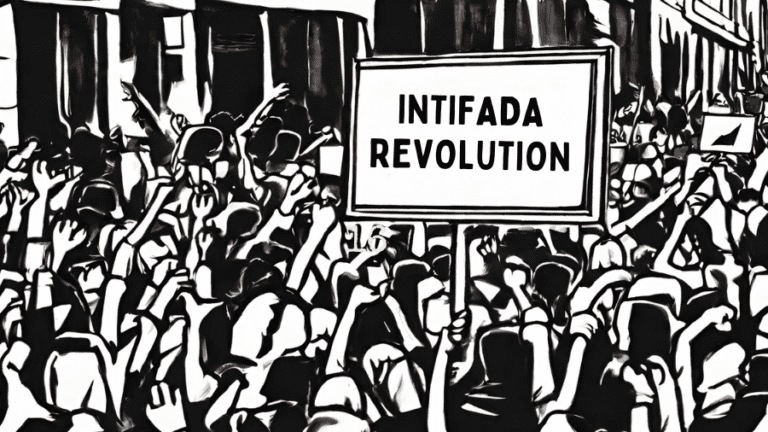
From the MacDonald Laurier Institute
By Hussain Ehsani
Canadian authorities must realize that calls for “intifada” constitute hate and even potentially an incitement to violence
When ISIS conducted its terrorist attacks on Mosul, Iraq in June 2014, several Mosul residents celebrated it as a victory for the terror group and welcomed them to the city. In March 2019, ISIS was defeated in a fight with Kurdish special units Peshmerga, Iraqi Forces, and the international coalition, and this time, five years later, Mosul celebrated the defeat of ISIS. Mosul had learned its lesson under ISIS’ reign of terror. Likewise, the fantasy of celebrating Islamic Jihadist and terrorist groups as liberators has disappeared, for the most part, across the Middle East.
However, the same cannot be said about the veneration of terror in the West. Less than 24 hours after the brutal October 7 terrorist attacks by Hamas on civilians and the Jewish state, Canada witnessed horrific and unimaginable scenes. People across the country paraded with Palestinian flags, chanting “Allah Akbar,” “Free Palestine,” “From the river to the sea, Palestine will be free,” and “Long live Intifada” — celebrating the Hamas attack that resulted in the murder of 1,200 Israelis. The scenes reminded me of Mosul’s celebration of ISIS’ victory in 2014, but this time they took place in in Mississauga, Ontario.
As Israel began its counter-terror operation the mobs became more aggressive – organizing rallies across the country, blocking intersections, threatening Jewish Businesses, attacking synagogues with guns and Molotov cocktails, and issuing bomb threat against the largest Jewish high school in Canada.
Although Hamas, Palestinian Islamic Jihad (PIJ), and the Popular Front for the Liberation of Palestine (PFLP) are listed as terrorist organizations by the Government of Canada, these groups are being praised by the pro-Jihadi mobs. They have flown the flag Hamas and the PFLP, they have worn green headbands representing Hamas, and yellow armbands of PIJ. Some in Toronto even raised the flag of the Taliban. Others have worn jackets with the symbols of Jihad, martyrs, and Al Qaeda symbols during protests. All while they scream “Intifada, intifada, long live the intifada,” “Globalize the intifada,” and “There is only one solution, intifada, revolution” – unmistakable calls for violence against Jews that refer to the bloody Palestinian terror campaigns of the late 80s and early 2000s.
Despite the clear connection between the terror groups and this violent call, law enforcement across the country have been reluctant to act and make arrests on those shouting “Intifada.” This refusal encourages the pro Hamas mobs to continue their antisemitic rallies and disguises calling for violence as a progressive solution for the Palestinian cause.
There is no doubt that calling for intifada is calling for violence. This is most clearly demonstrated by the Second Palestinian Intifada which consisted of suicide bombings, shootings, stabbings, and other terror tactics. These tactics have been used by other major Islamic Jihadist groups such as the Taliban, ISIS, and Al Qaeda. In April 1993, during the first Intifada, Hamas suicide bomber Saher Tamam Al Nablusi detonated the switch under the seats in his car and blew himself up on the West Bank. Based on the result of this attack, Hamas and its allies kicked off massive campaign of suicide attacks up against Israel. According to the statistics of Israeli institutions and studies, during two phases of Intifada, Hamas, PIJ, and PFLP conducted more than 130 suicide attacks. In the aftermath of the Intifada, the tactic of car bombs was vastly used by the Haqqani network in Afghanistan, Al Qaeda in Iraq, the Taliban in Afghanistan, and ISIS in Iraq and Syria.
And Intifada is not restricted to terror attacks but includes a clear strategy undergirded by religious ideology. For example, the book “Palestinian Resistance against Israel in Jerusalem” lays out the rhetoric and chants that Palestinians shouted in protests during the first Intifada, including: “Khaybar Khaybar O Jewish! The Mohammad Army will come back.” This chant refers to the Battle of Khaybar in which Muslims fought against the Jews in the first era of Islam in the Khaybar district of Medina in Hejaz in early 628 CE, which led to the victory of Muslims. “Mohammad Army” in this context is a metaphor for all Muslims around the world, and the chant is calling all Muslims to assemble another Khyabar, which strives to provoke and unite all Muslims against Jews. Another example “Praise the God O Muslim – explode the head of Zionist.” This chant was yelled in Toronto, Ontario. This has no other meaning except Jihad and the militarization of Muslims around the world to eliminate Jews and Israelis.
Hamas, Palestinian Islamic Jihad, and their allies are utilizing Jihadi tactics to pursue their objectives here in Canada. Calling for “Intifada” in the streets, malls, subway stations, and university campuses in Canada is a direct call for Jihadism and its principles to be enacted in the West. This is why the globalization of Intifada means globalizing the Jihad. It means globalizing violence against Jews.
Canadian authorities should realize that calls for “intifada” constitute hate and even potentially an incitement to violence. If they fail to, it will not be long until we see ISIS flags and chants for reviving the Caliphate. They are one and the same and we cannot allow this hate to fester unaddressed.
Hussain Ehsani is a Middle East affairs expert focused on the Abraham Accords and Canadian foreign policy.
espionage
The Scientists Who Came in From the Cold: Canada’s National Microbiology Laboratory Scandal, Part I
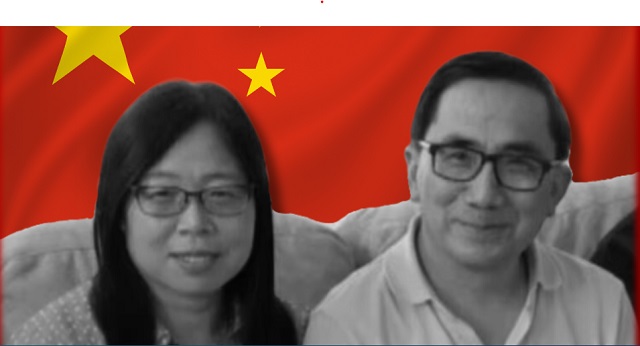
From the C2C Journal
By Peter Shawn Taylor
In a breathless 1999 article on the opening of Canada’s top-security National Microbiology Laboratory (NML) in Winnipeg, the Canadian Medical Association Journal described the facility as “the place where science fiction movies would be shot.” The writer was fascinated by the various containment devices and security measures designed to keep “the bad boys from the world of virology: Ebola, Marburg, Lassa” from escaping. But what if insiders could easily evade all those sci-fi features in order to help Canada’s enemies? In the first of a two-part series, Peter Shawn Taylor looks into the trove of newly-unclassified evidence regarding the role of NML scientists Xiangguo Qiu and Keding Cheng in aiding China’s expanding quest for the study – and potential military use – of those virus bad boys.
Great Reset
Biden Administration Eager to Sign WHO Pandemic Treaty
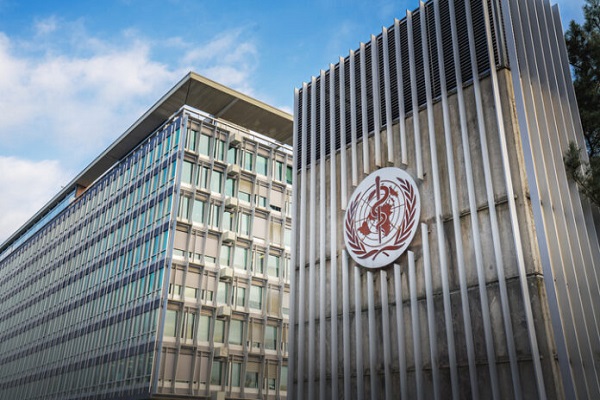
From Heartland Daily News
By Bonner Russell Cohen, Ph.D.
The Biden administration signaled its support for the World Health Organization’s (WHO) new pandemic treaty expected to be finalized at its World Health Assembly in Geneva, Switzerland, the final week of May.
Pamela Hamamoto, the State Department official representing the United States at the meeting, stated that “America is committed to signing the treaty that will ‘build a stronger global health structure,’” wrote John Tierney, a senior fellow at the Manhattan Institute and a contributing editor, in the City Journal.
Adoption of a legally binding pact governing how countries around the world are to respond to future outbreaks like the recent COVID-19 pandemic has been the goal of WHO-directed negotiations since 2021. The WHO, a United Nations-sponsored organization, came under sharp criticism for its handling of the coronavirus.
On May 8, attorneys general from 22 states sent President Biden a letter saying they oppose the accords which will turn the WHO into the “world’s governor of public health.” The letter says giving the WHO such authority violates the U.S. Constitution, and could lead to censorship of dissenting opinions, undermine Constitutional freedoms, and give the WHO power to declare any “emergency” besides health including climate change, gun violence, and immigration.
Missteps on COVID-19
In a post on Twitter (now X) on January 14, 2020, the WHO stated: “Preliminary investigations conducted by the Chinese authorities have found no clear evidence of human-to-human transmission of the novel #coronavirus (2019-nCoV) identified in #Wuhan, #China.”
Two weeks later, on January 30, 2020, WHO’s Emergency Committee issued a Public Health Emergency of International Concern (PHEIC), stating, “The Committee emphasized that the declaration of a PHEIC should be seen in the spirit of support and appreciation of China, its people, and the actions China has taken on the front lines of this outbreak, with transparency and, it is to be hoped, success.”
The WHO’s initial investigation into the origins of COVID-19 concluded it was improbable that the virus resulted from experiments at the Wuhan Institute of Virology, though it later acknowledged that it could have come from a lab leak at Wuhan. The WHO’s investigation, which was thwarted by Chinese officials, ultimately reached no conclusion. President Trump announced the United States’ withdrawal from the WHO, a decision reversed by President Joe Biden on January 20, 2021.
More Smoke and Mirrors
Further undermining the WHO’s credibility in setting policies on managing a future pandemic, the group decided to include Peter Daszak, president of the New York-based EcoHealth Alliance, in its initial investigation into the origins of COVID-19.
Daszak and EcoHealth Alliance prominently featured in an investigation by the U.S. House Select Subcommittee on the Coronavirus Pandemic into the government’s funding and lack of oversight of gain-of-function research at the Wuhan lab, for which EcoHealth received grants from the National Institute of Allergy and Infectious Diseases and the National Institutes of Health.
In an interim report released on May 1, 2024, the subcommittee said there is “significant evidence that Daszak violated the terms of the NIH grant awarded to EcoHealth. Given Dr. Daszak’s apparent contempt for the American people and disregard for legal reporting requirements, the Select Subcommittee recommends the formal debarment of and a criminal investigation into EcoHealth and its President.”
After the release of the report, U.S. Rep. Tom Emmer (R-MN) told the Washington Examiner, “The World Health Organization covered up the Chinese Communist Party’s role in developing and spreading COVID-19 and has since failed to hold them accountable for the global pandemic that killed millions, upended our daily lives, and destroyed thousands of small businesses.”
Public Fed Up
The WHO’s shaky record on COVID, including its close ties to China and Peter Daszak, have taken a toll on the public’s willingness to accept its leadership in any future pandemics.
A poll conducted by McLaughlin & Associates for the Center for Security Policy, released on April 17, found that 54.6 percent of likely voters oppose tying the United States to a WHO pandemic treaty, and just 29.0 percent favor such a move.
Agreements Bypass Congress
While providing few details, at the World Economic Forum in Davos, Switzerland in January, WHO Director General Tedros Ghebreyesus said, “The pandemic agreement can bring all the experience, all the challenges we have faced and all the solutions into one. That agreement could help us prepare for the future in a better way.”
The “treaty” the Biden administration is eager to sign will likely be an executive agreement, like the 2015 Paris Climate Agreement, which was not presented to the U.S. Senate for ratification but contained “commitments” President Barack Obama pledged to honor.
Also in the works in Geneva are amendments to International Health Regulations, which Congress would not approve or disapprove.COVID
WHO’s Power Grab
Sen. Ron Johnson (R-WS), sent a letter to President Biden signed by all 49 Republican senators, expressing their concern about the powers that could be handed to WHO, on May 2.
“Some of the over 300 proposals for amendments made by member states would substantially increase the WHO’s emergency powers and constitute intolerable infringements upon U.S. sovereignty,” the letter states.
Craig Rucker, president of the Committee for a Constructive Tomorrow (CFACT), who has attended UN-sponsored conferences around the world for over 30 years, says the WHO is a destructive force.
“WHO’s performance during COVID-19 was a lethal combination of incompetence and dishonesty,” said Rucker. “The organization failed to protect public health and went to extraordinary lengths to cover up China’s role in fostering gain-of-function research at the Wuhan lab. Ratification of any WHO pandemic treaty would be nothing short of a travesty.”
Bonner Russell Cohen, Ph.D. ([email protected]) is a senior fellow at the National Center for Public Policy Research.
-

 Crime2 days ago
Crime2 days agoThe US Canadian border: Greatest number of terrorist watch list individuals being apprehended at northern border
-

 Economy1 day ago
Economy1 day agoCanadians experiencing second-longest and third steepest decline in living standards in last 40 years
-

 espionage7 hours ago
espionage7 hours agoThe Scientists Who Came in From the Cold: Canada’s National Microbiology Laboratory Scandal, Part I
-

 Great Reset1 day ago
Great Reset1 day agoBiden Administration Eager to Sign WHO Pandemic Treaty
-

 Opinion1 day ago
Opinion1 day agoOrdinary working Canadians are not buying into transgender identity politics
-
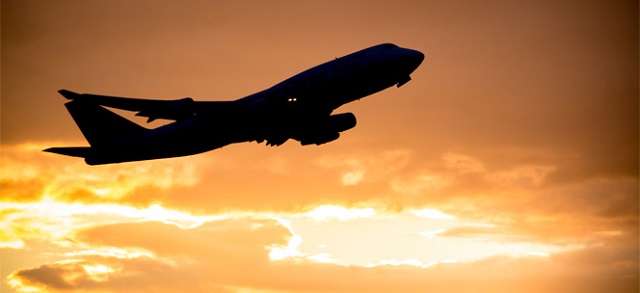
 Economy1 day ago
Economy1 day agoFeds spend $3 million to fly 182 politicians and bureaucrats to climate conference
-

 Energy1 day ago
Energy1 day agoNew Report Reveals Just How Energy Rich America Really Is
-
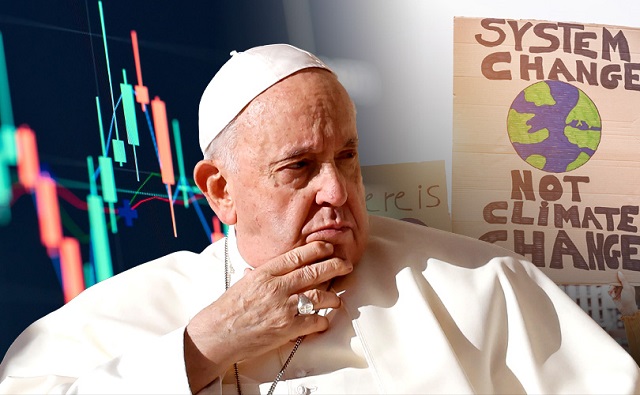
 Energy2 days ago
Energy2 days agoPope Francis calls for ‘global financial charter’ at Vatican climate change conference



 No happy endings here:
No happy endings here:  Internationally-renowned virologist Xiangguo Qiu (top left) and her husband, biologist Keding Cheng (top right), both worked at Winnipeg’s National Microbiology Laboratory (NML) until they were escorted off the premises in July 2019 for what was initially described as an “administrative matter”. (Sources of photos: (top left)
Internationally-renowned virologist Xiangguo Qiu (top left) and her husband, biologist Keding Cheng (top right), both worked at Winnipeg’s National Microbiology Laboratory (NML) until they were escorted off the premises in July 2019 for what was initially described as an “administrative matter”. (Sources of photos: (top left) 
 A look behind the curtain: Made public in February 2024, the 623-page collection of formerly-classified documents includes (from left to right) a third-party investigation into Qiu and Cheng, secret “Canadian Eyes Only” reports from the Canadian Security Intelligence Service (CSIS) and the pair’s own response to accusations made against them.
A look behind the curtain: Made public in February 2024, the 623-page collection of formerly-classified documents includes (from left to right) a third-party investigation into Qiu and Cheng, secret “Canadian Eyes Only” reports from the Canadian Security Intelligence Service (CSIS) and the pair’s own response to accusations made against them. “For the RCMP to go into the lab and remove the scientists…it had to be more than a personnel matter,” says John Williamson, a Conservative MP from New Brunswick. Williamson was the only Conservative member on the ad hoc committee of four MPs given access to the entire file of classified documents ahead of their public release. (Source of photo:
“For the RCMP to go into the lab and remove the scientists…it had to be more than a personnel matter,” says John Williamson, a Conservative MP from New Brunswick. Williamson was the only Conservative member on the ad hoc committee of four MPs given access to the entire file of classified documents ahead of their public release. (Source of photo:  “Scientists need to do what scientists do”: Initial investigations by the PHAC and CSIS revealed that Qiu and Cheng shared a surprisingly carefree attitude towards security rules, despite working in Canada’s only Level 4 Biosafety Laboratory. Shown, Qiu at work in her Winnipeg lab. (Source of photo:
“Scientists need to do what scientists do”: Initial investigations by the PHAC and CSIS revealed that Qiu and Cheng shared a surprisingly carefree attitude towards security rules, despite working in Canada’s only Level 4 Biosafety Laboratory. Shown, Qiu at work in her Winnipeg lab. (Source of photo:  The plot unfolds: The first CSIS investigation revealed that Qiu had conducted joint research with scientists at China’s Academy of Military Medical Sciences (shown). Despite this worrisome connection, CSIS was initially reluctant to categorize Qiu as a security risk. (Source of photo:
The plot unfolds: The first CSIS investigation revealed that Qiu had conducted joint research with scientists at China’s Academy of Military Medical Sciences (shown). Despite this worrisome connection, CSIS was initially reluctant to categorize Qiu as a security risk. (Source of photo:  CSIS reopened its investigation into Qiu and Cheng after “newly discovered information” cast doubt on Qiu’s loyalty to Canada due to her “close and clandestine relationships with a variety of entities of the People’s Republic of China.”
CSIS reopened its investigation into Qiu and Cheng after “newly discovered information” cast doubt on Qiu’s loyalty to Canada due to her “close and clandestine relationships with a variety of entities of the People’s Republic of China.” A talent for espionage: According to the FBI, China’s many “talent” programs usually involve “undisclosed and illegal transfers of information, technology, or intellectual property” from western countries to China.
A talent for espionage: According to the FBI, China’s many “talent” programs usually involve “undisclosed and illegal transfers of information, technology, or intellectual property” from western countries to China. “The only highly experienced Chinese expert available”: CSIS uncovered documents revealing that Qiu was considered essential to the research ambitions of the Wuhan Institute of Virology (shown), an institution with close ties to the Chinese military and infamous for its proximity, and likely connection, to the initial outbreak of Covid-19. (Source of photo: AP Photo/Ng Han Guan)
“The only highly experienced Chinese expert available”: CSIS uncovered documents revealing that Qiu was considered essential to the research ambitions of the Wuhan Institute of Virology (shown), an institution with close ties to the Chinese military and infamous for its proximity, and likely connection, to the initial outbreak of Covid-19. (Source of photo: AP Photo/Ng Han Guan) Bosom buddies: Shi Zhengli, WIV’s deputy-director and often referred to as “bat-woman” (left), and Major-General Chen Wei, China’s “top biowarfare expert” (right), frequently collaborated with Qiu during her time at the NML. (Source of left photo: Chinatopix via AP, File)
Bosom buddies: Shi Zhengli, WIV’s deputy-director and often referred to as “bat-woman” (left), and Major-General Chen Wei, China’s “top biowarfare expert” (right), frequently collaborated with Qiu during her time at the NML. (Source of left photo: Chinatopix via AP, File) Scrubbed clean: Qiu held multiple positions at Chinese universities as early as April 2016, but hid these facts from PHAC management and lied about them in her initial interview with CSIS.
Scrubbed clean: Qiu held multiple positions at Chinese universities as early as April 2016, but hid these facts from PHAC management and lied about them in her initial interview with CSIS. “There are no ethical boundaries to Beijing’s pursuit of power”: Former U.S. Director of National Intelligence John Ratcliffe raised the alarm about China’s biowarfare ambitions in 2020, noting that China has “conducted human testing on members of the People’s Liberation Army in hope of developing soldiers with biologically enhanced capabilities.” (Source of photo:
“There are no ethical boundaries to Beijing’s pursuit of power”: Former U.S. Director of National Intelligence John Ratcliffe raised the alarm about China’s biowarfare ambitions in 2020, noting that China has “conducted human testing on members of the People’s Liberation Army in hope of developing soldiers with biologically enhanced capabilities.” (Source of photo:  Spies happily ever-after: According to a Globe and Mail investigation, Qiu and Cheng currently live in China and are each employed in their chosen fields. Curiously, they appear to have adopted new names – Sandra Chiu and Kaiting Cheng.
Spies happily ever-after: According to a Globe and Mail investigation, Qiu and Cheng currently live in China and are each employed in their chosen fields. Curiously, they appear to have adopted new names – Sandra Chiu and Kaiting Cheng.



